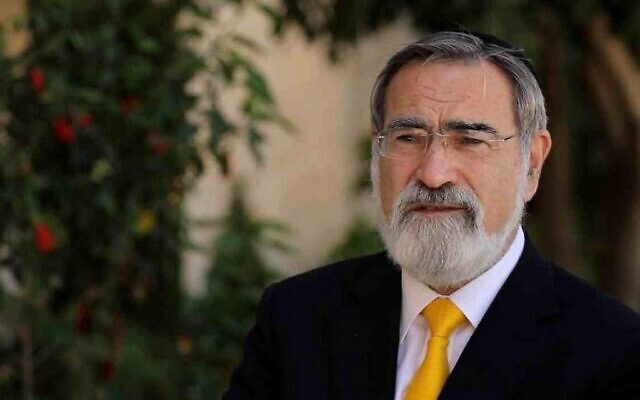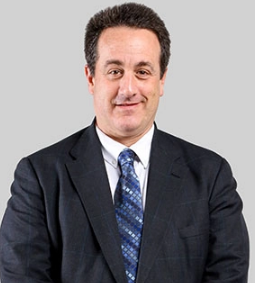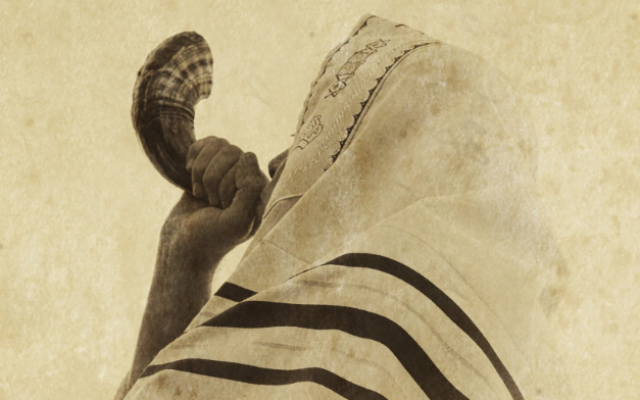Shofar’s Ancient Sound Gains New Meaning
Blast of ram’s horn aims to create new focus during troubling time.
Jordan Forman had been chanting the weekly Torah portion at Ahavath Achim Synagogue in the Peachtree Battle area for about a dozen years when he was suddenly asked to become the Conservative congregation’s shofar soloist for the high holidays. Although he had long admired the ability to coax musical notes out of an unadorned animal horn, he never expected to do it himself.
“The hardest part was just learning to make a sound out of it. The executive director of the synagogue, Barry Herman, helped me with that. Even though I knew how to play the clarinet, where you just blow down the middle, so to speak, what I learned is that it’s much easier to do it out of the side of the mouth.”
For the last 10 years, Forman, who is the ritual director of the synagogue, has been front and center for what is, arguably, one of the highlights of high holiday services.
 The shofar is the wordless cry of the heart of a religion of words,” said Rabbi Jonathan Sacks, former chief rabbi of Great Britain.
The shofar is the wordless cry of the heart of a religion of words,” said Rabbi Jonathan Sacks, former chief rabbi of Great Britain.
Rabbi Jonathan Sacks, former chief rabbi of Great Britain, describes the experience of hearing the ancient sounds of the shofar as something that can’t be put into words. In his edition of the high holiday prayer book he describes the sound that is both simple and complex.
“The shofar is the wordless cry of the heart of a religion of words. Judaism is a profoundly verbal culture. Yet there is a time for emotions that lie too deep for words. The sound of the shofar breaks though the carapace of the self-justifying mind and touches us at the most primal level of our being.”
Although the holiday of Rosh Hashanah is not mentioned by name in the Torah, the first day of the seventh month of the Hebrew calendar, according to the Torah, is to be a day for the remembrance with sounding of the horn, what is called in Hebrew, “yom zikhron teruah.”
There were no other instructions for what later was to be called the holiday of Rosh Hashanah. There was no description of how the horn was to be sounded or what notes were to be played and for what purpose. Nor were there any instructions for how the shofar was to be incorporated into the other commandment of the day, the sacrificial ritual of animal slaughter in the sacred courts of the Temple in Jerusalem.
All that would evolve over the centuries and eventually be set down in the Talmud, which described the three notes of shofar sounding.
The first, tekiah, is a single long and lively note, as if one were greeting a royal ruler. The second, shevarim, a series of three short blasts that has been said to remind listeners of sobbing or sighing, and teruah, a long trembling sound of nine sharp notes that is likened to the sound of an alarm.
According to the “Mishkan Hanefesh,” the high holidays prayer book of the Reform movement, the experience of hearing the shofar is to have the impact of “immediacy, sound passing directly from the instrument to the ear. To hear the message of the shofar, we need to be fully present and focused. The shofar cannot penetrate an indifferent ear or a closed mind or heart.”
In writing about the emotional response that the shofar brings outs in each of us, the religious scholar Joel Gereboff says that the shofar first and foremost seeks to penetrate what he calls “the Jew within.” By altering “our sense of our place in the world and to provide us with the sense of hope and responsibility for the coming year,” according to Gereboff.
“These notes, the tekiah, shevarim and teruah combined with the compositions of diverse liturgists continue to call out and bring together individuals and communities and to move them to reflect upon the meanings and purposes of their lives.”

Performing before the attentive holiday worshippers at AA synagogue, Forman says he senses that same feeling of urgency.
“It’s a call to wake up people. And I treat it as such. It’s a new year. It’s time to change things from the year before.”
That’s particularly appropriate this year, according to Forman, who is not allowing the restrictions imposed by the pandemic to prevent those who want to hear the mystical sound of the ancient shofar ritual in person. On the second day of Rosh Hashanah AA synagogue is making something very old into something very new, a “drive in shofar service,” according to Forman.
“Because we can’t crowd in a building, people will come by in their cars to the parking lot on that Sunday afternoon for a few hours. And I think they’re gonna spread it out. Yeah, there will be several of us blowing our shofars from the front seat of our automobiles.”




comments